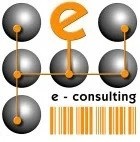Managed IT Services vs. Break/Fix: Which is Best for Your Business?

Managed IT Services vs. Break/Fix: Which is Best for Your Business?
Managed IT Services vs. Break/Fix IT Support UK: Which Is Best for Your Business?
Choosing the right model for IT support UK operations can define whether your company thrives through seamless continuity or struggles under reactive repair bills. In Birmingham and the West Midlands, unplanned outages cost businesses an average of £4,300 per hour and can erode productivity, revenue and reputation in equal measure.
Cost of Downtime for Businesses
Unplanned IT outages can be very costly for businesses, leading to significant financial losses. These costs can arise from lost productivity, revenue, and damage to a company’s reputation.
This research supports the article’s claim about the financial impact of IT downtime on businesses.
This article defines break/fix IT support and managed IT services, compares their cost structures, security and scalability, highlights the local edge E-Consulting UK delivers, and guides you to the optimal choice for your small or medium enterprise. By the end, you will understand how proactive monitoring and fixed monthly fees can improve uptime, budgeting and strategic IT planning compared with the traditional reactive model.
What Is Break/Fix IT Support and How Does It Work?
Break/fix IT support is a reactive service model where technical issues are addressed only after they occur, billed per incident or hourly rate, and resolved without ongoing oversight or strategic planning. Providers respond to calls for hardware failures, software errors or network outages, dispatching technicians as needed to restore operations. This on-demand approach requires minimal commitment but leaves businesses exposed to unpredictable repair costs and extended downtime.
When support is needed, a typical break/fix engagement follows three steps:
- Issue Reporting – Users log a ticket when a device or service fails.
- Incident Diagnosis – Technicians assess root causes on-site or remotely.
- Repair and Close – Faulty components are replaced or reconfigured, and the incident is marked resolved.
This reactive nature sets the stage for understanding why break/fix can leave organisations vulnerable to extended downtime and unexpected expenses.
What Are the Key Characteristics of Break/Fix IT Support?

Break/fix support is defined by its pay-as-you-go structure, delivering ad-hoc repairs without preventive maintenance.
- Cost per incident or hourly rate applies only when services are rendered.
- No continuous monitoring or scheduled maintenance is provided.
- Service scope is limited to troubleshooting and repair without strategic IT guidance.
- Response times vary depending on provider availability and geographic proximity.
These characteristics highlight a simple, low-commitment model that improves cash flow short term but lacks proactive measures to prevent future failures, steering us to examine the hidden costs that inevitably surface.
What Are the Hidden Costs and Risks of Break/Fix IT Support?
Below is a comparison of direct fees and hidden impacts associated with break/fix support:
Direct labour fees mask the real expense of lost output, potential regulatory penalties and the reputational damage that can follow prolonged outages.
How Does Break/Fix IT Support Affect Business Productivity and Continuity?
Break/fix support can undermine productivity and impede continuity in three primary ways:
- It increases mean time to repair (MTTR), extending service outages.
- It forces teams to reprioritise urgent fixes over strategic projects.
- It leaves no framework for disaster recovery or business continuity planning.
When systems fail without warning, teams lose focus on core operations and scramble to restore functionality, often missing critical deadlines and customer commitments. Recognising these limitations clarifies why many organisations seek a more proactive, predictable alternative.
What Are Managed IT Services and How Do They Benefit UK Businesses?

Managed IT services provide continuous, proactive monitoring, maintenance and strategic guidance under a fixed-fee agreement, effectively outsourcing your entire IT department.
Benefits of Managed IT Services
Managed IT services offer proactive monitoring and maintenance, which can lead to improved uptime and more predictable IT spending. This approach helps businesses to align their technology with their overall business goals.
This source provides evidence for the advantages of managed IT services, as discussed in the article.
In this arrangement, an outsourced provider leverages remote monitoring tools, helpdesk support and a defined service-level agreement (SLA) to manage infrastructure, applications and end-user devices. The result is improved uptime, consistent budgeting and alignment of technology with business goals.
What Services Are Included in Managed IT Support?
Below is a list of core services delivered under most managed IT packages:
- Proactive network and server monitoring to detect anomalies
- Helpdesk assistance for user incidents and service requests
- Cybersecurity management including firewalls, antivirus and threat detection
- Cloud infrastructure support and data backup solutions
- Software patch management and operating system updates
- Strategic IT planning and quarterly review sessions
These comprehensive offerings ensure every layer of your technology stack is maintained, secured and aligned with your growth objectives, paving the way to fixed costs and enhanced business resilience.
How Do Managed IT Services Provide Predictable Costs and Budgeting?
Managed services are billed as a fixed monthly fee, typically per user or per device, enabling accurate forecasting of IT expenditure. This model:
- Eliminates fluctuating repair bills by bundling labour and support into one payment.
- Caps service costs regardless of incident volume or urgency.
- Aligns IT spending with business scale, adding or removing licenses as teams grow or restructure.
With predictable fees, finance teams gain full visibility of technology budgets and can allocate resources to innovation rather than surprise repair costs.
How Do Managed IT Services Minimise Downtime and Maximise Productivity?
A proactive maintenance cycle reduces unplanned outages and optimises performance through:
- Continuous system health checks that identify vulnerabilities before they cause failures.
- Automated patch deployment that keeps software up to date without manual intervention.
- Scheduled backups and disaster recovery drills that ensure rapid restoration in case of major incidents.
By preventing most disruptions, managed IT services sustain user productivity and allow businesses to focus on strategic initiatives instead of firefighting technical issues.
What Are the Main Differences Between Managed IT Services and Break/Fix Support?
A side-by-side comparison highlights the core distinctions between reactive and proactive IT models:
This comparison underscores how managed IT services deliver a predictable, security-focused strategy that aligns technology with business objectives, contrasting sharply with the ad-hoc nature of break/fix.
How Do Cost Structures Compare Between Managed IT and Break/Fix Models?
Managed IT operates on a subscription basis—often between £50 and £100 per user each month—while break/fix demands unpredictable payments for each call-out and repair. This fixed pricing model in managed services transforms IT from a variable overhead into a controlled, scalable investment.
What Is the Impact of Proactive vs. Reactive IT Support on Business Operations?
Proactive support prevents issues from escalating, reducing the frequency and duration of disruptions. Reactive support addresses problems only after they occur, doubling mean time to resolution and increasing risk of extended outages. The proactive approach contributes directly to operational resilience and continuous service delivery.
How Do Support Scope and Strategic IT Planning Differ?
Break/fix covers immediate fixes only, lacking guidance on optimisation or growth. Managed services include quarterly IT strategy reviews, capacity planning and technology roadmaps, ensuring your infrastructure evolves in line with market trends and compliance requirements.
How Does Each Model Affect Cybersecurity and Compliance?
Cybersecurity and Compliance in IT Support
Managed IT services often include robust cybersecurity measures and support for regulatory compliance. This can help businesses to reduce risks and avoid potential penalties.
This citation supports the article’s discussion of how managed IT services can improve a company’s security posture and compliance.
What Are the Scalability and Growth Implications for Businesses?
Managed IT allows seamless addition or removal of users and devices, aligning IT costs with headcount changes. Break/fix scaling depends on technician availability and can lead to delayed responses as teams grow or offices expand, impeding agility.
Why Are Managed IT Services the Best Choice for Small and Medium UK Businesses?
For SMEs in the West Midlands, managed IT services offer an outsourced IT department with enterprise-grade capabilities at a predictable cost. This model supports growth by delivering proactive security, business continuity planning and access to expertise that smaller firms often can’t staff internally.
How Do Managed IT Services Enhance Cybersecurity and Risk Management?
Managed services embed multiple layers of protection—firewalls, intrusion detection, endpoint protection—and conduct regular vulnerability assessments to block ransomware, phishing and data breaches before they impact operations.
How Do Managed IT Services Support Business Continuity and Disaster Recovery?
Through automated backups, off-site replication and documented recovery plans, managed IT services ensure critical data and applications can be restored within minutes to hours, reducing financial loss and reputational damage from unplanned events.
How Does Access to Expert IT Knowledge and Latest Technology Benefit Businesses?
Partnering with a managed service provider grants immediate access to certified specialists, AI-driven monitoring tools, cloud migration expertise and emerging technologies—without the overhead of hiring full-time staff.
What Cost Savings and Productivity Gains Can Businesses Expect?
By reducing downtime by up to 75 percent and smoothing IT budgets, SMEs can reinvest savings in innovation rather than emergency repairs.
How Does Local IT Support in Birmingham and the West Midlands Improve Service Quality?
Local presence means rapid on-site response, familiarity with regional infrastructure challenges and personalised support for Birmingham businesses. E-Consulting UK pairs its headquarters in the West Midlands with remote monitoring to deliver best-in-class service both on-site and online.
Why Is Local Presence Important for Managed IT Services?
A local managed service provider can dispatch engineers within hours, attend face-to-face reviews and tailor solutions to regional compliance standards, ensuring alignment with local business needs.
How Do Local Businesses Benefit from Tailored IT Solutions?
By understanding sector-specific challenges—from hospitality’s peak seasons to healthcare’s strict data regulations—local providers customise network architectures, backup strategies and security policies to each client’s requirements.
What Are Real Examples of Birmingham Businesses Improving with Managed IT?
- A construction firm reduced on-site network failures by 90 percent, enabling seamless project management.
- A legal practice achieved GDPR compliance and avoided a potential £50,000 fine through tailored data retention policies.
- A retailer saw a 60 percent drop in point-of-sale interruptions after switching to proactive monitoring.
These cases demonstrate how local expertise drives measurable improvements in continuity, compliance and customer satisfaction.
How Can Businesses Decide Between Managed IT Services and Break/Fix Support?
Selecting the right model requires evaluating cost tolerance, risk appetite and long-term IT strategy. Businesses seeking predictable budgeting, stronger security and strategic guidance typically benefit from managed services, while very small operations with minimal uptime demands might opt for break/fix.
What Factors Should Businesses Consider When Choosing IT Support Models?
- Business Size and Growth Plans – Will headcount or infrastructure scale soon?
- Budget Predictability Needs – Can you absorb variable repair bills?
- Risk Tolerance – Are you comfortable with unplanned outages?
- Compliance Requirements – Do you need regular audits or certifications?
- In-House Expertise – Does your team have capacity for proactive maintenance?
Assessing these criteria aligns your choice with operational priorities and financial constraints.
When Is It Time to Switch from Break/Fix to Managed IT Services?
Signs it’s time to transition include:
- Recurring incidents that disrupt service
- Escalating emergency call-out fees
- Lack of IT roadmap or strategic planning
- Compliance audits exposing security gaps
Recognising these triggers helps you move from firefighting to future-proof support.
What Questions Should You Ask Your IT Provider Before Deciding?
- What is your average response time for critical incidents?
- Which monitoring and reporting tools do you use?
- How do you handle software updates and security patches?
- Can you outline your backup and disaster recovery plan?
- What service-level agreements do you guarantee?
These queries reveal the depth of expertise, tools and processes behind each support model.
What Are the Current Trends and Future Outlook for Managed IT Services in the UK?
The UK managed services market is expanding rapidly, propelled by AI integration, multi-cloud adoption and rising cybersecurity demands. Providers are shifting from break/fix remediation to predictive analytics, threat hunting and continuous compliance.
How Is AI Integration Shaping Managed IT Services?
AI-powered monitoring platforms analyse log data in real time, detecting anomalies and automating routine maintenance—freeing engineers to focus on strategic initiatives and reducing alert noise by up to 70 percent.
What Are the Emerging Cybersecurity Innovations in Managed IT?
Next-generation firewalls, extended detection and response (XDR) platforms and automated threat intelligence feeds are now standard in managed packages, enabling faster incident containment and improved regulatory alignment.
How Will Managed IT Services Evolve to Support Business Growth and Continuity?
Future services will emphasise:
- Multi-cloud Orchestration for seamless workload distribution
- Adaptive Disaster Recovery with instant failover capabilities
- Predictive Capacity Planning driven by usage analytics
These trends ensure businesses stay agile, secure and prepared for evolving challenges.
What Are the Typical Costs of Managed IT Services Compared to Break/Fix Support in the UK?
Understanding the financial implications of each model clarifies return on investment and cash-flow impact for UK organisations.
What Is the Average Price Range for Managed IT Services per User?
Managed IT services typically range from £50 to £100 per user per month, depending on service scope, industry compliance needs and remote vs. on-site support coverage.
How Do Unpredictable Break/Fix Costs Impact Business Budgets?
Break/fix budgets can spike unpredictably during outages, with emergency call-out fees and after-hours premiums inflating repair costs by up to 150 percent, making financial planning challenging.
How Can Predictable Managed IT Fees Improve Financial Planning?
Fixed monthly fees remove cost variability, enabling finance teams to forecast IT expenses accurately, allocate funding to strategic projects and avoid cash-flow disruptions caused by unexpected repair invoices.
Managed IT services deliver consistent budgeting, stronger security and scalable growth for UK businesses, while break/fix support leaves organisations vulnerable to unplanned expenses and extended downtime. For reliable, proactive IT support tailored to Birmingham and the West Midlands, contact E-Consulting UK today to discuss a fixed-fee managed IT solution that boosts performance, protects data and aligns technology with your growth plans.


